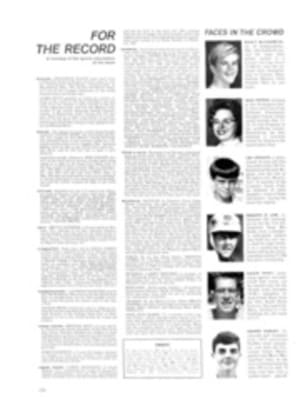
If you're a turned-on water rat, you'll want to drift down the Mackenzie River
Drifting down a river in a motorless craft is just about the best method in the world of 'getting away from it all,' " writes Elinor B. Nickerson in a statement guaranteed to turn on river rats almost everywhere. In a new book, Kayaks to the Arctic (Howell-North Books Berkeley calif., $4.95), Mrs. Nickerson, a high school physical—education teacher from Alamo, Calif., describes a 10—week summer tour down Canada's mighty Mackenzie River with her husband and three sons, ages 10, 12 and 19. Her pleasantly escapist story rambles along downstream from the day in late June when the family put in their three Klepper folding kayaks at Fort Providence just west of Great Slave Lake to the day in August when they finally "took out," nearly 1,000 miles downriver at Inuvik in the sprawling, muddy Mackenzie Delta.
It was an ambitious journey even for seasoned kayakers and campers like the Nickersons. They had their share of sudden and severe squalls, rough seas ("rollicking along over two—foot combers in a craft that has maybe four inches of freeboard"), three-day northers and what must be the world's greatest concentration of bloodthirsty mosquitoes, bulldog flies and no-see-ums that forced them to wear "full bush armor" when they camped at night along the river.
But there were also idyllic days when the family rafted their kayaks together and drifted through swift stretches, relaxing and doing the laundry over the side. The boys caught pike and grayling, made friends with Slavey Indian and Eskimo children and "finally learned to enjoy 'listening' to the quiet." Black bears, jaegers, ducks, geese and bobcats were abundant, and ample driftwood made campfire cooking easy. The Nickersons ate mostly dried and dehydrated foods and reprovisioned at Hudson's Bay stores in the river settlements. In camp, the family played checkers and cards, read and had songfests with 19-year-old Devon on the guitar.
News of their progress preceded them downriver by "moccasin telegraph" and the Nickersons were warmly welcomed at each of the large settlements they visited and at Indian fish camps, oil rigs and construction sites in the bush.
Sadly and unaccountably, Kayaks to the Arctic, like so many travel—adventure books, suffers from the lack of a detailed map on which to trace the family's journey. River rats who want to follow the Nickersons' voyaging in imagination are advised to buy a good map of the North country before settling down with this otherwise very readable book.

